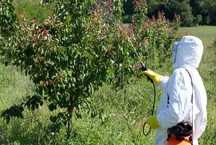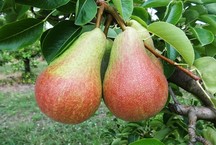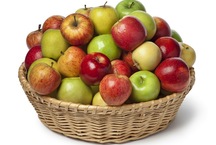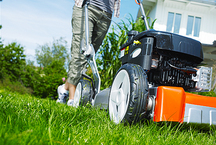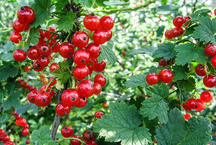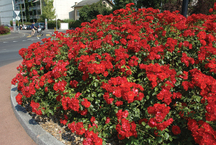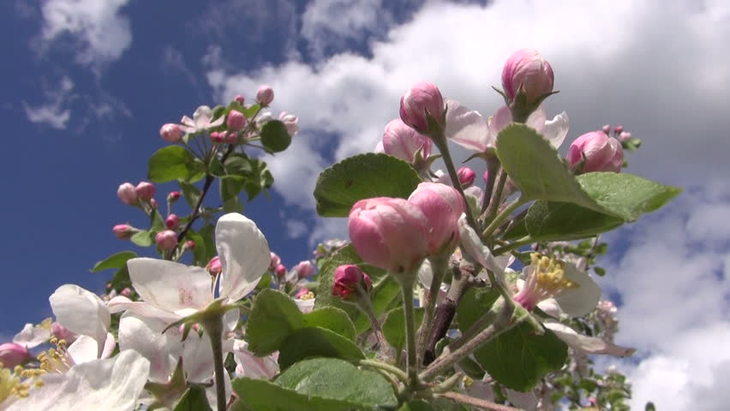
Spring activities to protect the garden from pests and diseases - prevention of the mass distribution of harmful objects and a pledge of a high and healthy harvest. When the trees in the spring only go out of the resting stage, they can be safely treated with general-concentration preparations of high concentration. There are still more than 2 months before fruit harvesting, so the waiting period will definitely be maintained.
General rules and features of spring protective measures
Work in the garden begins before the snow melted. Before the start of sap flow sanitary pruning, removing damaged and frostbitten black shoots. Cuts are processed with garden pitch and painted with paint. Cut dry branches along with the remnants of fallen leaves (that did not have time to withdraw in the fall) immediately burned.
When the soil dries out a little, hold loosening or shallow digging pristvolnyh circles. So we destroy part of the overwintering pests and improve conditions for beneficial soil microorganisms. After the work described, the garden looks well-groomed: it is ready for further phytosanitary procedures.
Deadlines garden treatments with pesticides always important, but especially in the spring. It is necessary to focus not on the calendar, but on the phases of tree development. If you do not have time to process before the kidneys swell - you can transfer the work, but only by adjusting the concentration of the working solution. Otherwise, a burn of young leaves is provided, and even a discharge. In early spring, when the average daily temperature is less than 10 ° C, biologics are not effective. We start with copper sulfate, urea, Bordeaux mixture and colloidal sulfur. These compounds are very aggressive, so we work in personal protective equipment and use only plastic and glass dishes. Spray the trees in dry weather, as high humidity increases the risk of burns. When preparing the solution, we strictly observe the recommended concentrations. Another important parameter is daytime temperature. Preparations of early spring action work at temperatures above + 5 ° C. Information on the temperature range of action is indicated in the pesticide instructions.
Scheme of spring protective measures for fruit trees
Planned garden treatments from “before the buds swell” to “bud segregation” are presented in a table that serves as a reminder for beginning gardeners. The possibility of re-using one drug in different phases is also reflected in the table, but repeated treatments of trees are needed only with a high pest number or a high degree of disease damage in previous years. The best effect is achieved with the alternation of several drugs.
|
Phase of plant development |
Event / drug |
Harmful object |
Note |
|
before the start of sap flow |
sanitary cutting and stripping of bark |
complex pests and diseases |
Disinfecting pruners and hacksaws after each tree. Sections are treated with garden bar and stained. |
|
in early spring, based on weather conditions |
whitewashing trunks and bases of skeletal branches |
protection against temperature changes and sunburn |
Ready water-dispersed paint or a mixture of hydrated lime (2 kg), clay (1 kg) and copper sulphate (300 g) per 10 liters of water |
|
before the buds swell |
5% copper sulfate solution |
scab, powdery mildew, |
|
|
iron sulfate solution |
scab, powdery mildew |
300 - 500 g per 10 liters |
|
|
"Green cone", before bud break, at a temperature above + 5 |
urea 5% (carbamide) |
wintering stages of aphids, apple red mite, apple moth, tsvetoeda, leafworms |
Is an additional dressing at the beginning of the growing season, allowed in tank mixture with vitriol |
|
Bordeaux mixture, 3% |
complex of pathogens |
The working solution is prepared from vitriol and lime in a 1: 1 ratio (300 g of each substance per 10 liters of water). Stir the solution, allow to settle and drain off the precipitate. This will not filter it before filling in the sprayer |
|
|
after bud break |
Bordeaux mixture, 1% |
complex of pathogens |
The working solution is prepared from vitriol and lime in a 1: 1 ratio (100 g of each substance per 10 liters of water) |
|
Bitoxibacillin, P Lepidocid |
spider mite, sheet-eating caterpillars |
Plan 2 - 3 treatments at intervals of 7 - 10 days, daytime temperatures above + 20 |
|
|
HOM |
scab, powdery mildew, klyasterosporiosis, coccomycosis, moniliosis |
is a copper based sulfur preparation |
|
|
Aktara Bi-58 |
aphid, weevils, tsvetoed |
It is advisable to alternate drugs with different active substance in order to avoid the development of resistance in pests. |
|
|
Chorus Topaz Is fast |
monilioz, spotting, scab, powdery mildew, coccomycosis |
Systemic fungicides provide a long lasting protective effect. |
|
|
isolation of buds |
Tank mixture of fungicide and insecticide from the list above |
flower eater, aphids, moniliosis, coccomycosis |
The treatment is carried out only at high pest numbers or predicted epiphytotics for the prevention |
|
pink bud |
Alirin-B Lepidocid Bitoxibacillin Fitoderm |
severe powdery mildew, mass colonization of aphids or apple moth |
At this phase, the use of chemicals is highly undesirable because of the beginning of the summer of pollinating insects. |
With the beginning of flowering processing in the garden is temporarily stopped so as not to destroy the beneficial pollinators and entomophages. If absolutely necessary, you can use biologics. The volume and multiplicity of treatments carried out depend on the overall health of the garden and the most significant harmful factor in a particular region. If there are favorable weather conditions for the spread of powdery mildew, it is impossible to ignore the preventive spraying of copper-containing preparations.
There are few supporters among experienced gardeners. folk remedies tree protection. This is due to the complexity of the process and low efficiency. In any case, for trees, the use of tinctures difficult. The greatest response from gardeners received garlic tincture and tobacco dust from aphids on the berries and ornamental plants. To “scare away” pests, the soil under saplings and fruit trees can be sown with calendula and garlic.
Nuances of spring processing berry bushes
Berry crops start growing season earlier and give ripe harvest faster, therefore, when choosing drugs for processing, we give preference to biologics and drugs with a short waiting period.
Berry with tender leaves, we treat the Bordeaux mixture, which has a softer effect in comparison with copper sulfate. Prior to the growth of strawberry leaves and blooming buds on the bushes, we prepare a 3% working solution, and give a 1% solution on the sheet.
Gooseberry We do not spray the copper-containing drug, as it has a high toxic effect on the plant.
Outdated, but working method of extermination of the kidney tick on currant - scalding with boiling water until the buds begin to swell. To combat the glass case, it is important to timely trim the dry branches to the base. The larva winters in the lower part of the shoot at a height of 5 - 10 cm from the soil. If you cut the populated shoots with a delay - the pest will safely leave the wintering place and give a new generation.
With the right approach and attentive care for the garden, spring processing minimizes or completely eliminates the need to sprinkle trees during the growing season. Unfortunately, tight deadlines (sharp warming and the active growth of trees), bad weather (rain and wind) and lack of free time often confuse our plans.
Have a good harvest!
